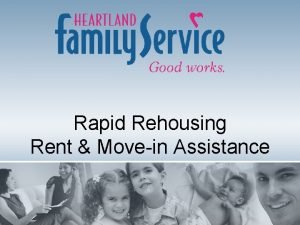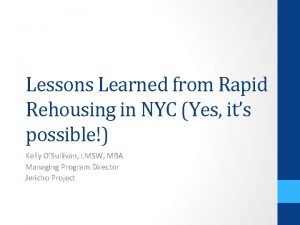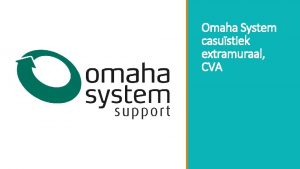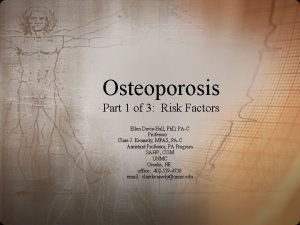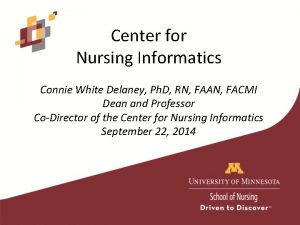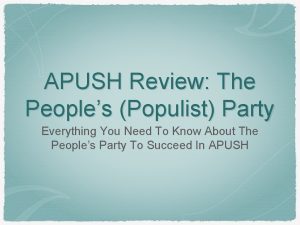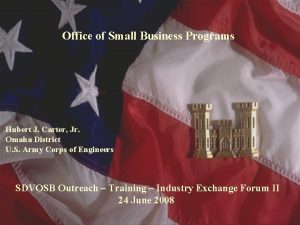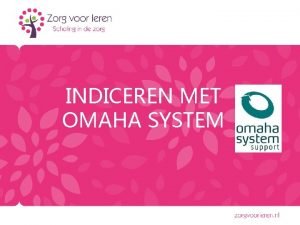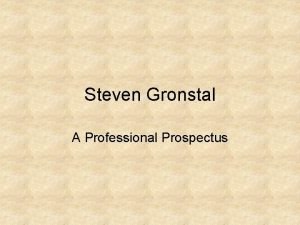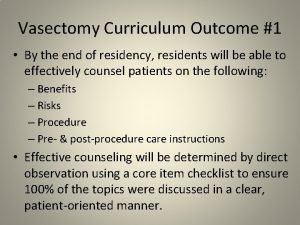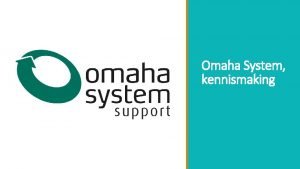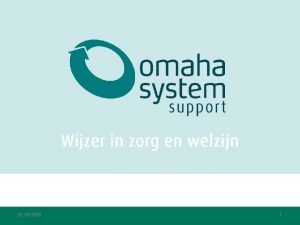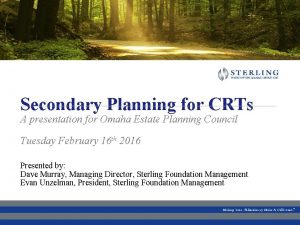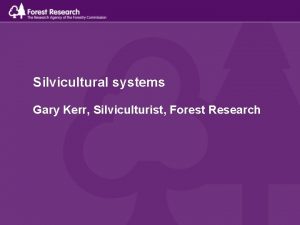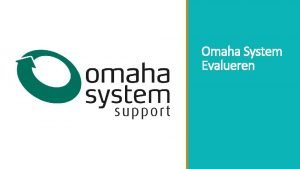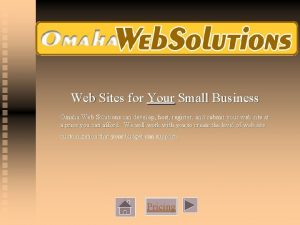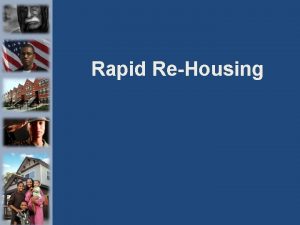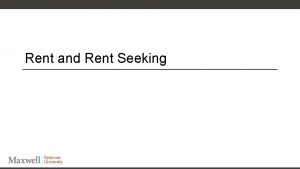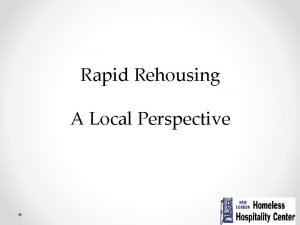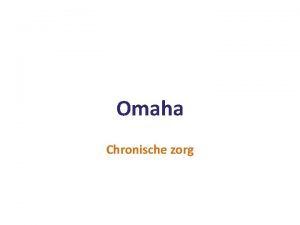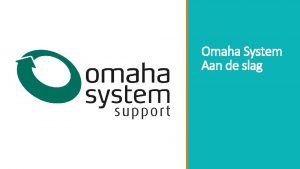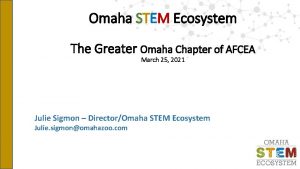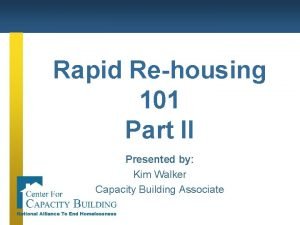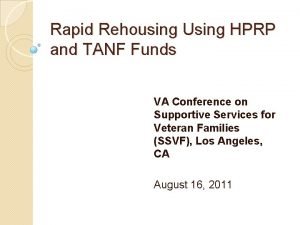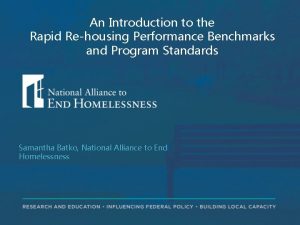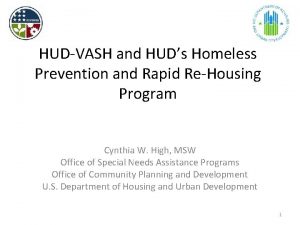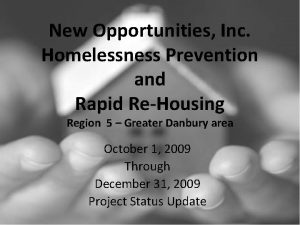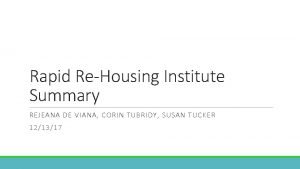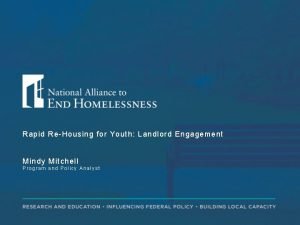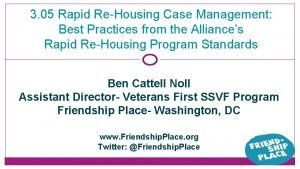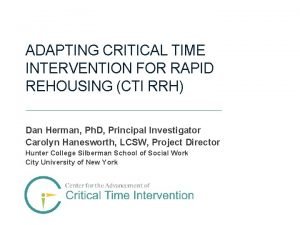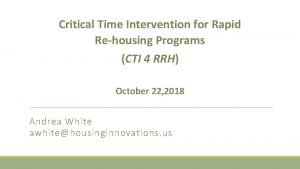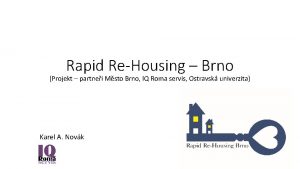Rapid Rehousing Rent Movein Assistance Welcome to Omaha























- Slides: 23

Rapid Rehousing Rent & Move-in Assistance

Welcome to Omaha

Omaha Demographics • The Omaha-Council Bluffs Co. C includes Douglas, Sarpy and Pottawattamie Counties • Population: 408, 958 or 895, 151 in the Metro Area • Median Household Income: $57, 593 • Median house value: $143, 200 • Median gross rent: $813 • Rental vacancy rate: 7. 66%

Homelessness in Omaha • In a single day in Omaha (1/28/16) • 1, 509 individuals were homeless (1, 157 households) • Living Situations • 983 – shelter • 469 – transitional housing • 57 - streets • Household Type • 1, 102 single individuals • 399 families with children • 8 youth only

Heartland Family Service Programs • Heartland Family Service • Multi-service human service agency • Operates 50 programs • 3 Focus areas: Child & Family, Counseling & Prevention and Housing & Financial Stability • Housing Programs • • • Homelessness Prevention Case Management (PATH) Street Outreach Rapid Rehousing Permanent Supportive Housing Domestic Violence Shelter & Transitional Housing

Rapid Rehousing Programs • Heartland Housing Opportunities • Serves Douglas, Sarpy, Pottawattamie Counties • Program Coordinator, 5 Case Manager, 1 Housing Advocate • 125 units, Serves 664 individuals annually • Heartland Housing Passages • • Serves Douglas and Sarpy Counties Youth ages 18 -24 (some dedicated to former wards). 5 Coordinator, 2 Case Manager, . 5 Housing Advocate 40 units, Serves 181 individuals annually • Pottawattamie County Homeless Link • Serves Pottawattamie County • . 5 Coordinator, 2 Case Manager, . 5 Housing Advocate • 50 units, Serves 479 individuals annually

Program Philosophy • Housing First • Low Demand • Monthly case management Services are mandatory • Trauma Informed Care • Client-Centered Approach to Service Delivery • Minimum Assistance Necessary • Length of stay is based on need (up to 12 months)

Rapid Rehousng Eligibility 1. Category 1 (Literally homeless) OR Category 4 (Fleeing/Attempting to Flee Violence). 2. No other residence AND lack the resources and support networks to obtain permanent housing. 3. Assessment determines that RRH is the best fit for the family/individual, as determined by scoring for RRH assessment on the VI-SPDAT

Prioritization RRH prioritizes subpopulations in the following order. 1. Veteran w/ Children 2. Non-Veteran w/ Children 3. Veteran w/o Children 4. All others w/o Children Within each subpopulation, households are organized based on length of homeless, then VI score.

Financial Assistance & Budget Management • Assistance determinations are not based on individual need, not monthly available funding • Budget for caseload size, based on average spending • Once caseloads are steady, you can adjust and make staffing or program changes • Financial assistance costs will vary greatly month by month, but average annually

Initial Assistance Determinations Length • All households provided rental deposit assistance. • Rental assistance is provided as needed. • Approvals on a month-to- month basis, unless circumstances clearly outline a need for multiple months (not approved for more than three months at a time). • Maximum length of rental assistance provided is 12 months. • Extensions beyond 12 months are available on a case-by-case basis (not to exceed 18 months total).

Initial Assistance Determinations Amount • Participant’s portion of housing costs (rent & utilities) is equal to 30% of their gross monthly income. • Calculation: gross monthly income x 30% • If utilities are not included in rent, then the monthly utility allowance is subtracted from this amount. • The participant’s portion of rental costs is waived for the first month of rental assistance (whether this represents a full or partial month of rent) so that no amount is due from the participant upon move-in.

Utility Assistance • Assistance is available as allowable by funding source • Monthly approval amount is the amount when the rent calculation comes to a negative number – this the amount of utility assistance provided • The amount by which the housing assistance exceeds the rent to the owner • The participant must submit a current copy of their utility bill within the calendar month. • If this documentation is not submitted then they will forego utility assistance for that particular month.

Rent Calculation Examples Monthly Gross Income $1, 500 Client’s Total Housing Cost $450 Utility Allowance $131 Client’s Cost minus Utilities $319 Monthly Gross Income $100 Client’s Total Housing Cost $30 Utility Allowance $131 Client’s Cost minus Utilities 101 Rent Owed to Landlord Program RA Payment Client Rent Payment Program Utility Payment $600 $281 $319 $0 $600 $0 $101 $-

Other Move-In Costs • All assistance limited to Co. C/ESG eligible costs • Needs based, case by case for those with income • Rental application fees • Utility deposits - if no mainstream assistance available • Utility arrears • Moving costs - truck rental or moving company, storage fees for up to 3 months prior to move-in • Bus tickets • Rental arrears – only if it is a requirement for approval at an apartment • Last month’s rent – available for high barrier clients • High barrier = 3 of the following categories: 1. No/low income (less than $800 per month) 2. Sex Offender or a felony within the last 10 years (can also include a prostitution, drug or a violent misdemeanor) 3. No rental history or Evictions within last 10 years

Securing Basic Needs at Movein • Identify needs once inspection passes • If furniture is needed 1. Access donation center 2. Identify community resources 3. Refer to program volunteer • Program volunteer • Secures donations and stores them • Identifies household needs • Organizes move-ins weekly • Move in kits – available to youth, former wards • Kitchen essentials, bedding, trash cans, baskets, hangers, towels, hygiene items, cleaning supplies • Costs is about $100 each

Recertifications Eligibility - Re-evaluated every 3 months. Criteria for approval: 1. Income does not exceed 30% of AMI. 2. Lacks sufficient resources. 3. Attend monthly case management meetings 1. If miss one month, a retention plan is completed Process - Gather income verification at CM meeting - If client has income, budget is completed - housing and basic needs in one column, other expenses in another - Staff complete new calculation - Bring to bi-weekly staffing meeting for approval

Transitioning from RRH & Progressive Engagement • Discharge planning beings at program entry! • Progressive Engagement • Begin planning for alternatives at six months, including subsidized housing applications • Assess for PSH eligibility (if VI score qualifies) and refer at nine months • If nothing in the months prior to timing out… get creative, plan for the possibility of moving • Aftercare planning at exit • Monthly check in recommended • Case Management available for 1 -3 months after exit

Results • Average LOS – 3 -5 months (including search) • 3 – PCHL (serves more families) • 3. 5 – Passages (youth) • 4. 8 – Opportunities (all populations) • Total Program Cost/Household = $2, 491 • $1, 967/household & $714/person (PCHL) • $2, 810/household & $1, 506/person (Passages) • $2, 696/Household & $1, 226/person (Opportunities) • Average Financial Assistance/Household = $1, 304 • $1, 018 (PCHL) • $1, 444 (Passages) • $1, 451(Opportunities)

Program Outcomes • Housing Stability (retain/exit to PH) • 74% (PCHL), 75% (Passages), 73% (Opportunities) • Total Income (remain/increase income) • 56% (PCHL), 53% (Passages), 56% (Opportunities) • Earned Income (remain/increase) • 31% (PCHL), 41% (Passages), 33% (Opportunities) • Days until Housing Placement: 28 -44 days • Avoid Recidivism (no ES entries one year post exit)

Braiding Funding Sources for Financial Assistance • Co. C, ESG, Housing Trust Fund, Private Foundations • Co. C & ESG • • utilize most stringent of the two regulations All clients are eligible for both need a 3 rd match source still Co. C doesn’t pay for utilities & is heavy on RA costs • Cross walk billing workflow for both • Private/Unrestricted funds are the bestest • Still only provide eligible financial assitance costs • Pays for admin and overhead costs that others

The Stuff that Didn’t Work… as well • Determining assistance case by case or dependent on the client budget • Inconsistent, appears unfair • Puts the CM and program in difficult role • Encourages clients to be dishonest about expenses • Tiered approach • Keeps clients in the program longer than needed • Costly – more financial assistance than needed • Paying rent the program instead of landlord • Duel role of service provider • Clients are less likely to pay

Lessons Learned • Clear policies – every supervisor and staff should be able come to the same conclusion on each case • Set a policy for participant’s portion and stick to it • More than 12 months wasn’t successful • Month to month approvals take more time, but ensure lower LOS • Use community resources and allow clients to use their resources before offering additional assistance types. Staff should assess, don’t advertise them all. • Plan well for move-ins (use a checklist) • Check in with clients on rent/utility payments at every meeting • People are more resourceful that we give credit for! • Must enjoy data & numbers to manage these programs – have to be strategic and think outside the box
 Rapid rehousing omaha
Rapid rehousing omaha Anne marie pierce
Anne marie pierce Rapid rehousing nyc
Rapid rehousing nyc Welcome welcome this is our christmas story
Welcome welcome this is our christmas story Field club neighborhood omaha
Field club neighborhood omaha Aib omaha
Aib omaha Dr ellen davis
Dr ellen davis Connie white omaha
Connie white omaha Populist party apush
Populist party apush Usace omaha district map
Usace omaha district map Voorbeeld zorgplan omaha palliatieve zorg
Voorbeeld zorgplan omaha palliatieve zorg Omaha system
Omaha system Radio shack omaha ne
Radio shack omaha ne Vasectomy omaha reviews
Vasectomy omaha reviews Actievlakken omaha
Actievlakken omaha Nicole koster
Nicole koster Omaha public schools transportation
Omaha public schools transportation Omaha estate planning council
Omaha estate planning council Silvicultural system
Silvicultural system Psoa omaha
Psoa omaha Omaha system zorgplan
Omaha system zorgplan Omaha web hosting
Omaha web hosting Madeleine kerr
Madeleine kerr Bis.buurtzorg
Bis.buurtzorg
